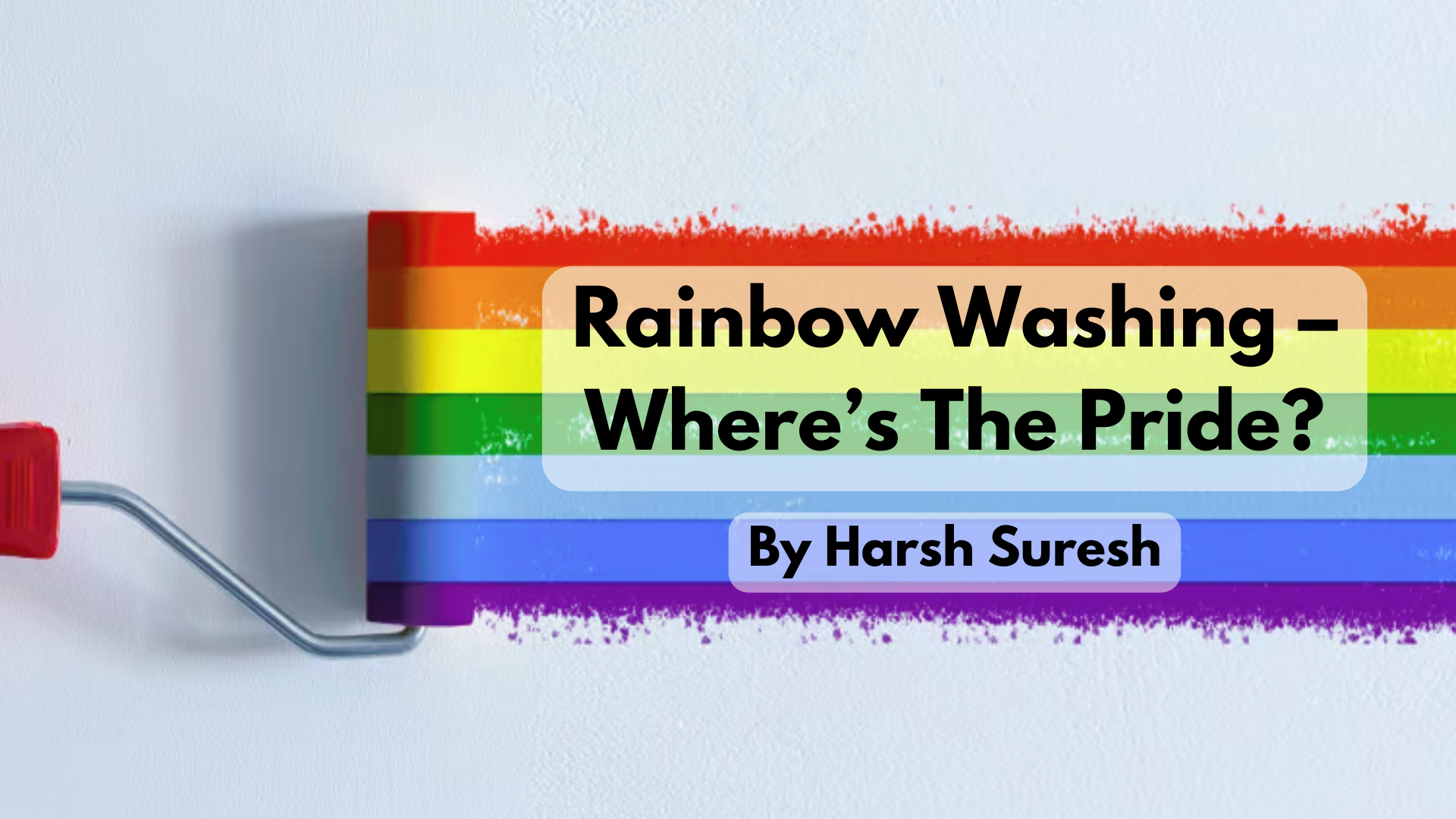
Festivals and holidays – sometimes, it feels like we remember these occasions thanks to all the ads about those festivals all over. The award for ‘most colorful holiday marketing’ would easily go to Pride Month, an entire month where we see rainbow-themed promotions all across social media. Upon opening their app, a delivery service pops up with a message of pride and equality. A cab-hiring application displays a rainbow-colored vehicle in its tracking details.
On the surface, there is nothing inherently wrong with such advertisements. However, a good six months after June, what do we really see all of these companies doing for the community? Rainbow washing refers to how corporations use LGBT-themed symbols and promotional offers to suggest that they are queer-friendly, while in reality, they may do very little to truly promote the interests of the community. Also known as ‘pinkwashing’, it capitalizes on superficially appealing to the community. Typically, companies ramp up their LGBT-centric promotional efforts during June but do little to bring visibility to the community for the rest of the year.
While rainbow washing is typically focused around Pride Month, it refers to any sort of performative gesture by corporations that essentially uses the LGBT community as a marketing gimmick.
A rather dark example would be a social media giant that has been under fire for a while now. The platform’s blog has guidelines encouraging content creators to put out LGBT-friendly content for Pride Month. At the same time, over the last several months, the platform has progressively relaxed its content regulation to such an extent that queer users frequently encounter hate speech there.
Another example would be a major clothing retailer. The company launched a ‘pride’ collection of clothing, claiming that a portion of the proceeds would go to LGBTQ+ charities (2018). While some of their competitors, like J. Crew, donated over 50% of proceeds from Pride merchandise to LGBTQ charities that year, this firm donated a mere 10%.
Why do companies even bother to cater to the queer community? The honest answer: good business sense. According to advisory firm LGBT Capital, the global annual spending power of the LGBT community (2022) is USD 4.7 trillion.
If that is the case, why do so many corporations not go beyond such shallow gestures? The simple answer: backlash. When companies openly and actively support the community, it can lead to criticism from conservative stakeholders and a homophobic public. For example, in 2021, an Indian FMCG giant released an ad featuring a same-sex couple participating in a festival for married couples. The ad was appreciated for its progressive theme.
However, social media backlash prompted the company to withdraw the ad, followed by an ‘unconditional’ apology for “unintentionally hurting people’s sentiments”. Ironic, isn’t it? Now, the inevitable question arises: what are companies expected to do? Never use a rainbow? Of course not. That is not what the debate around rainbow washing is concerned with. It just serves to highlight that large corporations, with their funds and influence, can do work that helps the community in a much more meaningful way than social media hashtags.
Quite a few companies have made a conscious effort to make their policies more inclusive – to go beyond paying lip service. Godrej Consumer Products, in their 2021 Annual Report, declared that they were going to make concerted efforts to hire more people from the LGBT+ community and create a more inclusive environment for their existing employees. Tata Steel expanded its Diversity and Inclusion (D&I) policy in the last few years, and under that, LGBT+ employees can declare their partners and avail a whole host of HR benefits on par with the rest of their employees. Flipkart has begun actively hiring transgender persons in its supply chain operations. Ernst & Young was the first of the Big Four professional service firms to receive a 100% rating in corporate equality from the Human Rights Campaign, and in 2021, the firm organized a series of programs to raise awareness around IDAHOTB (International Day Against Homophobia, Transphobia, and Biphobia). Capgemini and Accenture have expanded their medical insurance benefits to cover the cost of medical transition for transgender employees. Such initiatives are more meaningful because these organizations take on a long-term commitment to LGBT+ inclusion, whatever the resistance from conservative stakeholders.
I recently saw a poll on social media asking why corporations should support the community. All the options pertained to employee turnover and company performance – not even one stated that it was just the right thing to do. What’s stopping them from striving to become better employers? Corporations sink a lot of money into their June promotional efforts in the name of supporting the LGBT community. When these funds don’t translate into actual benefits, it becomes another attention-grabbing marketing gimmick with no tangible gain to the community itself. Perhaps it’s time corporates did serious thinking so their efforts don’t ring hollow.
References:
Godrej Consumer Products working on diversity in operations, promoting inclusion on gender and LGBT+ – The Economic Times (indiatimes.com)
Tata Steel asks LGBTQ+ employees to declare partners, avail HR benefits – Times of India (indiatimes.com)
LGBTQ: Firms take steps to attract more LGBTQ+ talent – The Economic Times (indiatimes.com)
Ernst & Young LLP Offers Personnel New Tax Offsets on Same-Sex Domestic Partner Health and Welfare Benefits in the US (prnewswire.com)
When individual recognition means collective progress for LGBT+ inclusion | EY Irelandlgbt-capital.com

Name: Harsh Suresh
Bio: As someone who finds humor in everything, Harsh absolutely loves to laugh. Has been writing since 5th standard, and has had numerous published pieces since.
PGDM-HRM, XLRI (batch of ’25)
